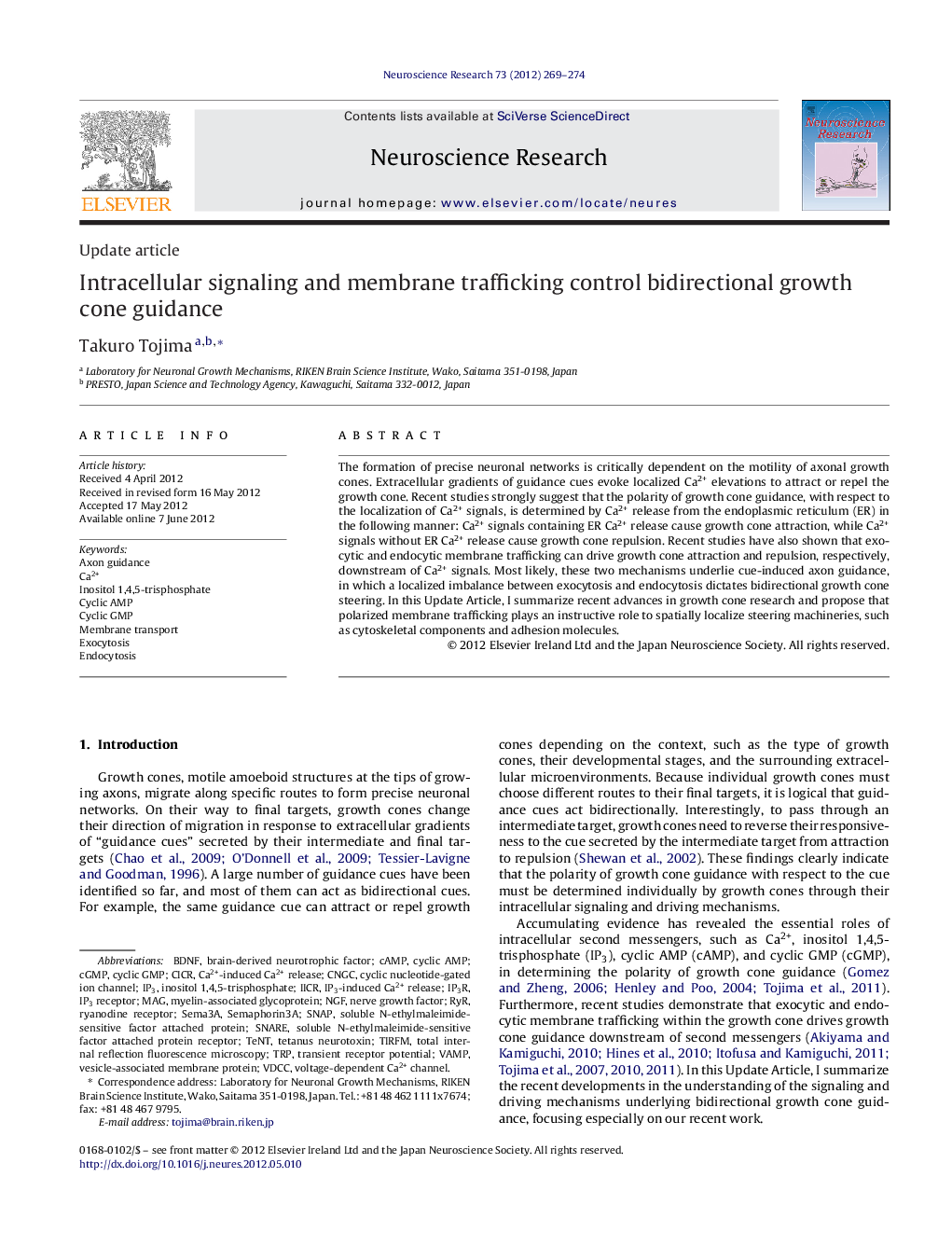| Article ID | Journal | Published Year | Pages | File Type |
|---|---|---|---|---|
| 4351476 | Neuroscience Research | 2012 | 6 Pages |
The formation of precise neuronal networks is critically dependent on the motility of axonal growth cones. Extracellular gradients of guidance cues evoke localized Ca2+ elevations to attract or repel the growth cone. Recent studies strongly suggest that the polarity of growth cone guidance, with respect to the localization of Ca2+ signals, is determined by Ca2+ release from the endoplasmic reticulum (ER) in the following manner: Ca2+ signals containing ER Ca2+ release cause growth cone attraction, while Ca2+ signals without ER Ca2+ release cause growth cone repulsion. Recent studies have also shown that exocytic and endocytic membrane trafficking can drive growth cone attraction and repulsion, respectively, downstream of Ca2+ signals. Most likely, these two mechanisms underlie cue-induced axon guidance, in which a localized imbalance between exocytosis and endocytosis dictates bidirectional growth cone steering. In this Update Article, I summarize recent advances in growth cone research and propose that polarized membrane trafficking plays an instructive role to spatially localize steering machineries, such as cytoskeletal components and adhesion molecules.
► Ca2+ release from the endoplasmic reticulum mediates attractive axon guidance. ► Ca2+ signals without Ca2+ release favor repulsive axon guidance. ► Exocytic membrane trafficking drives Ca2+-induced growth cone attraction. ► Endocytic membrane trafficking drives Ca2+-induced growth cone repulsion. ► The imbalance between exocytosis and endocytosis dictates bidirectional axon guidance.
